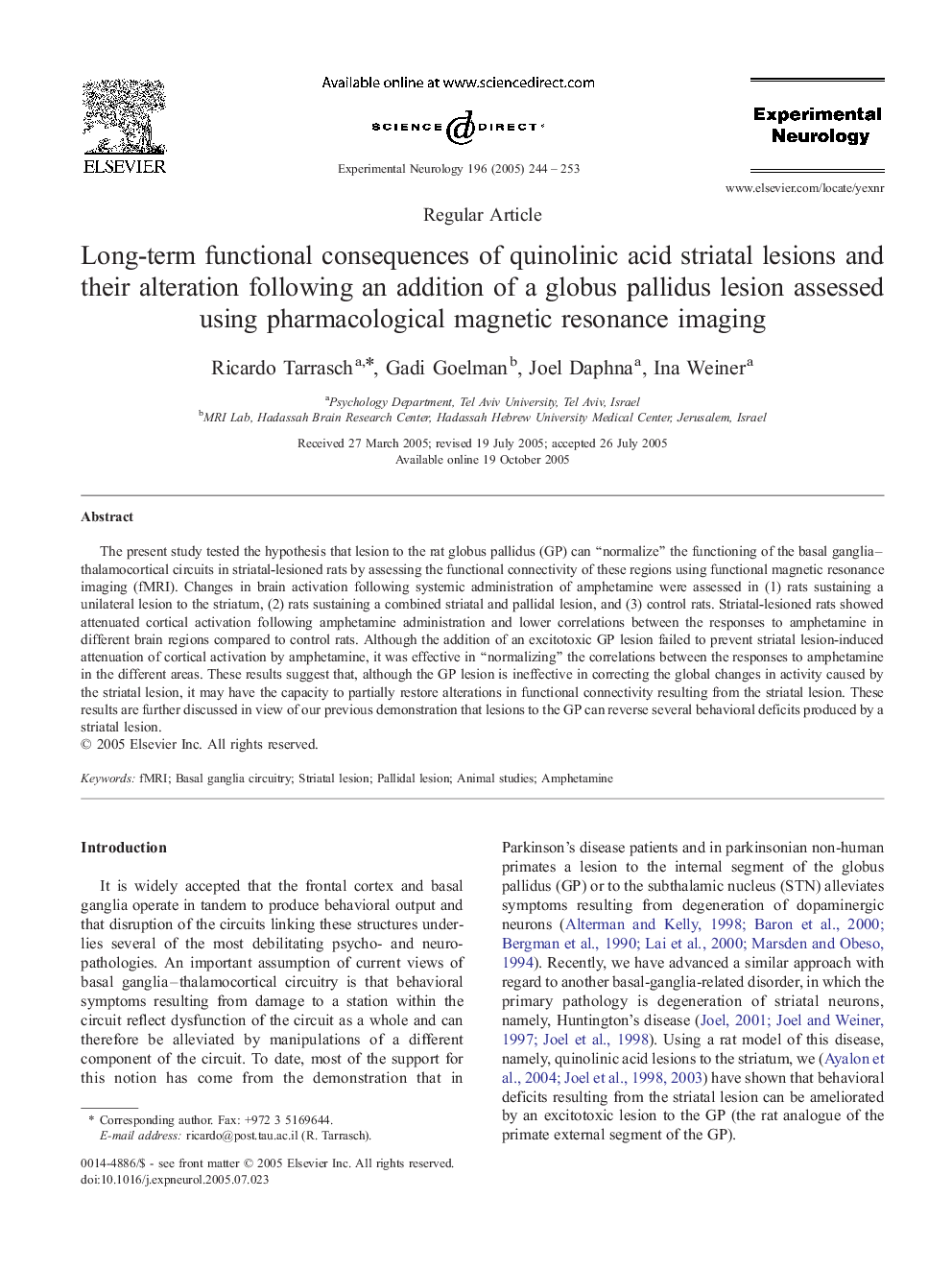| Article ID | Journal | Published Year | Pages | File Type |
|---|---|---|---|---|
| 9191902 | Experimental Neurology | 2005 | 10 Pages |
Abstract
The present study tested the hypothesis that lesion to the rat globus pallidus (GP) can “normalize” the functioning of the basal ganglia-thalamocortical circuits in striatal-lesioned rats by assessing the functional connectivity of these regions using functional magnetic resonance imaging (fMRI). Changes in brain activation following systemic administration of amphetamine were assessed in (1) rats sustaining a unilateral lesion to the striatum, (2) rats sustaining a combined striatal and pallidal lesion, and (3) control rats. Striatal-lesioned rats showed attenuated cortical activation following amphetamine administration and lower correlations between the responses to amphetamine in different brain regions compared to control rats. Although the addition of an excitotoxic GP lesion failed to prevent striatal lesion-induced attenuation of cortical activation by amphetamine, it was effective in “normalizing” the correlations between the responses to amphetamine in the different areas. These results suggest that, although the GP lesion is ineffective in correcting the global changes in activity caused by the striatal lesion, it may have the capacity to partially restore alterations in functional connectivity resulting from the striatal lesion. These results are further discussed in view of our previous demonstration that lesions to the GP can reverse several behavioral deficits produced by a striatal lesion.
Related Topics
Life Sciences
Neuroscience
Neurology
Authors
Ricardo Tarrasch, Gadi Goelman, Joel Daphna, Ina Weiner,
